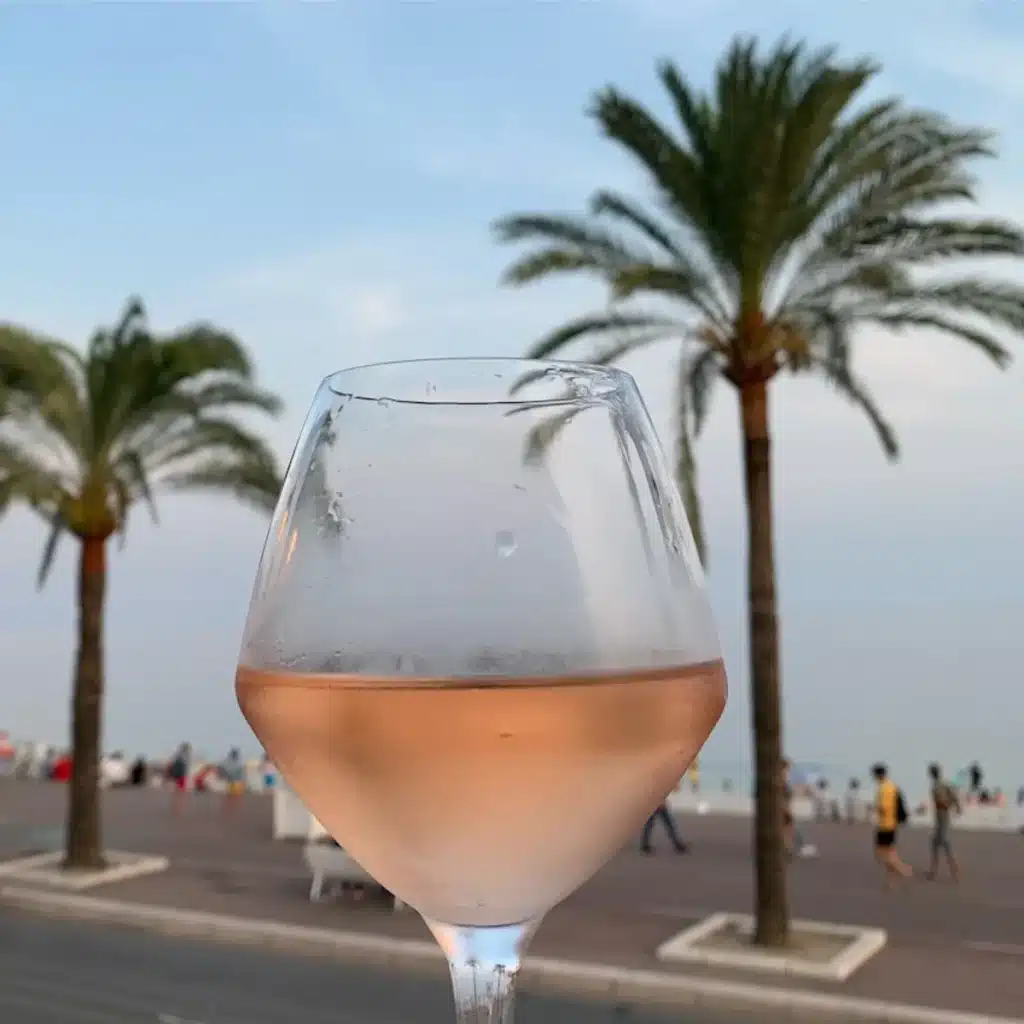With any kind of wine, I know what I like, and I like what I know. When it comes to Rosé, that means a chilled glass of Minuty, Bandol, Whispering Angel, Mirabeau, or Miraval. Just don’t ask me what kind of Rosé it is.
I can already see the sommelier wince as I ask for “the pale one?”
I have to admit—I’ve never been entirely sure if that means sweet or dry. Worse still, I didn’t even know how Rosé wine is made. So, before I hit the French Riviera this summer, I figured it was time to find out.
Here’s what I’ve learned about Rosé wine, starting with the most fundamental question::
How Is Rosé Wine Made?
Unlike what I (and many others) assumed, Rosé wine is not made by mixing red and white wine together. Instead, it’s crafted using red or black grapes with minimal skin contact, giving it that signature pink hue.
There are three main methods of making Rosé, and the one used can impact its flavour, colour, and dryness:
1. Maceration Method (Most Common in Provence)
The grape skins are left in contact with the juice for a short period—just a few hours to a couple of days—before they’re removed. This extracts colour, tannins, and delicate flavours without the deep richness of red wine.
Most Provence Rosé wines use this method, which results in their signature pale, dry style.
2. Direct Pressing
The grapes are pressed immediately, producing the lightest, palest Rosé possible. This is often used for high-end Provence Rosés, where winemakers want an ultra-refined, delicate profile.
3. Saignée Method (Used in Some French Regions)
Some winemakers “bleed off” a portion of juice from a red wine batch early in fermentation, making a darker, more intense Rosé. This method is more common in Tavel and Spanish Rosados.
After pressing, fermentation begins, where yeast converts sugars into alcohol. The fermentation temperature and duration influence the wine’s character, from crisp and dry to more fruit-forward and soft.
💡 Provence Rosé wines are best enjoyed young, within one to two years of their vintage, to capture their fresh, fruity character.
Does Pale Rosé Always Mean Dry Rosé?
I always assumed the paler the Rosé, the drier it was—but that’s not actually true.
A wine’s sweetness isn’t dictated by its colour but rather by how fermentation is handled. If the winemaker allows fermentation to continue until all sugar is converted to alcohol, the wine will be dry. If some sugar remains, the wine will be off-dry or sweet.
That said, Rosé from Provence is almost always dry, while Rosés from California, Spain, or White Zinfandel-style wines often lean sweeter.
🔹 How to Spot a Dry Rosé:
• Provence, Bandol, Tavel, and Corsican Rosés tend to be dry.
• Higher alcohol (12.5% ABV or more) often means a drier Rosé, as more sugar has been fermented away.
• Rosé labels don’t always state sweetness levels, so check the region and producer’s notes.

Where to Find the Best Rosé Wines
If you want to drink Rosé like the French, these are the regions to look for:
🇫🇷 Provence – The Home of Rosé
This is the benchmark for dry, elegant Rosé wines, making up 90% of Provence’s total wine production.
• Côtes de Provence AOC – The largest Rosé-producing region, known for delicate, floral, and citrusy wines.
• Bandol AOC – Richer, more structured Rosés with spice and depth.
• Tavel AOC – Technically part of the Rhône Valley, but famous for darker, fuller-bodied Rosés that pair well with food.
🇪🇸 Spain – Home of “Rosado”
• Navarra & Rioja – More fruit-forward Rosés made with Tempranillo and Garnacha grapes.
🇮🇹 Italy – “Rosato” Wines
Tuscany, Sicily & Abruzzo – Bolder, cherry-hued Rosatos with a little more body.
The Best Provence Rosé Wines to Try
While I’m no expert, I can share the Rosés that I find particularly enjoyable:
I’m no sommelier, but these are the Rosés I always go back to:
Château Minuty (Côtes de Provence, France)
🍷 Tasting Notes: Light, crisp, and fruity with citrus and white floral notes.
🌍 Why It’s Great: A staple in the South of France, perfect for warm afternoons.
Bandol Rosé (Bandol AOC, France)
🍷 Tasting Notes: Fuller-bodied with notes of peach, spice, and citrus.
🌍 Why It’s Great: A more structured Rosé with aging potential.
Mirabeau (Côtes de Provence, France)
🍷 Tasting Notes: Classic Provence Rosé with refreshing strawberry and raspberry notes.
🌍 Why It’s Great: Award-winning and widely available.
Miraval (Côtes de Provence, France)
🍷 Tasting Notes: Elegant and complex, with minerality and summer fruit notes.
🌍 Why It’s Great:
Originally a Provençal wine estate, Miraval is now owned by Brad Pitt and has gained fame not just for its Rosé but also for its recording studio. Did you know that legendary artists like Pink Floyd, AC/DC, and Wham recorded there? It’s called Studio Miraval for a reason! What’s not to love?
Whispering Angel (Château d’Esclans, Provence, France)
🍷 Tasting Notes: Dry, crisp, and delicate with red berry and peach flavours.
🌍 Why It’s Great: One of the most popular Provence Rosé wines worldwide.
I’ve also discovered a delightful Croatian Rosé when last in Dubrovnik. It is called ‘ Saints Heels’, though it’s not so popular in the UK, but some online wine merchants do stock it.
Rosé in Nice: The Perfect Setting

It’s always Rosé O’Clock somewhere in the world—but nothing beats sipping a glass of Whispering Angel on the French Riviera.
Provence isn’t just about the wine. It’s about long lunches in Nice, golden-hour aperitifs in Saint-Tropez, and the sound of cicadas in the hills above Bandol.
If you’re planning a trip to the South of France, do check out:
- A Long Weekend in Nice
- Movies Set in the South of France
- Classic albums you didn’t know were recorded in the South of France
- Great Books set in the South of France
Final Thoughts
Rosé might be easy to drink, but there’s a whole world of variety behind every glass. From the crisp, pale pinks of Provence to the deeper Tavel and Bandol Rosés, there’s a style for every occasion.
So, next time someone asks you about Rosé, you’ll know exactly what to say (and what to pour).
Cheers! 🍷
